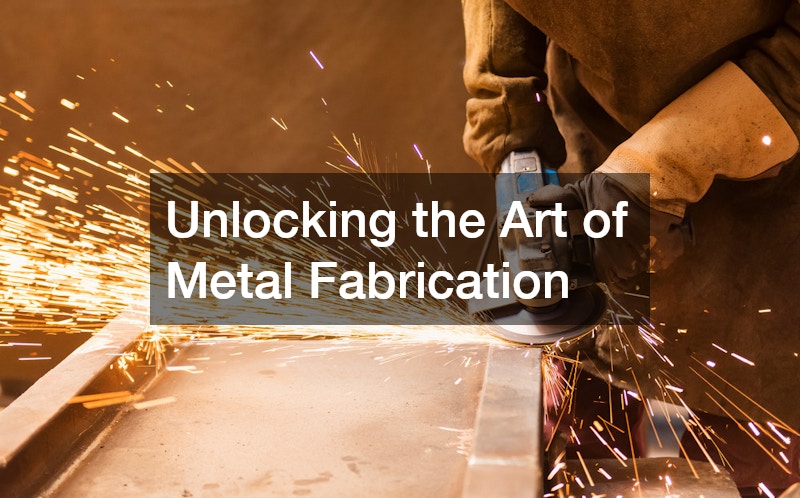Metal fabrication is a craft that combines precision, strength and creativity to produce everything from structural steel beams to intricate custom brackets. It plays a vital role in many industries across Australia, including construction, manufacturing and mining.
Understanding how this process works can help you appreciate the engineering behind the structures and machines we rely on every day.
What Metal Fabrication Involves
Metal fabrication refers to the process of transforming raw metal materials into usable components through cutting, bending and assembling. The work is typically done using a range of machinery, from manual tools to advanced computer-controlled systems. Each step requires a high level of skill to ensure the final product meets exact specifications.
The journey usually begins with design. Engineers or draftsmen create technical drawings based on the client’s needs. These designs are then used to guide the fabrication process. Metals such as steel, aluminium and copper are selected depending on the strength, weight and corrosion resistance required. From there, fabricators begin shaping the material.
The Core Techniques in Metal Fabrication
Three core techniques dominate the metal fabrication process—cutting, bending and welding. Cutting involves reducing large metal sheets or bars to the correct size. This can be done using tools like saws or lasers. Bending reshapes the metal without cutting it, using machines like press brakes to apply pressure. Welding is used to join separate pieces together to form a single, strong structure.
Skilled fabricators know how to combine these methods while maintaining accuracy and strength. Poor fabrication can result in weak joints or misaligned parts, which can affect both safety and functionality. That’s why certified tradespeople with proper training are essential for reliable results.
Applications Across Australian Industries
The reach of metal fabrication extends far beyond workshop floors. In the construction sector, it is used to build frameworks for houses, bridges and commercial buildings. Fabricated steel supports are often hidden within walls and floors but play a critical role in structural integrity.
In manufacturing, it allows the creation of machine parts, tools and enclosures tailored to each application. The mining and energy sectors depend on it for equipment that withstands harsh environments. Even artists and designers use metal fabrication for decorative installations or modern furniture.
Each industry has specific standards that fabricators must follow, from weld quality inspections to corrosion protection. Fabrication shops often specialise in a particular area to meet these requirements more efficiently.
Precision and Innovation in Modern Fabrication
Modern metal fabrication has evolved significantly with the help of digital technology. Computer-aided design (CAD) software allows engineers to develop highly accurate blueprints. These files can be transferred to CNC (Computer Numerical Control) machines, which cut or drill metal with precision that is hard to match by hand.
Innovation has also improved material efficiency and safety. New welding techniques and protective coatings help fabricators create stronger and more durable components. Laser cutters and robotic arms make it easier to work with intricate designs or thin materials that would be difficult to manage manually.
This combination of human expertise and machine precision is what sets high-quality metal fabrication apart. The ability to interpret complex plans, measure precisely and handle materials correctly all come into play to deliver consistent results.
Working With a Fabrication Specialist
If you are considering a project that involves metal fabrication, it is important to work with a specialist who understands both the technical and practical aspects of the job. Clear communication at the design stage ensures the final product will suit your needs and fit within budget.
A reliable fabricator will explain the options available, suggest the best materials and outline realistic timeframes. They should also adhere to safety standards and provide examples of previous work to demonstrate their experience. Whether you need a structural beam for a renovation or a custom bracket for industrial equipment, choosing the right professional makes all the difference.
Final Thoughts
Metal fabrication is more than just bending and welding steel. It is a detailed process that blends creativity with engineering and demands a high level of precision. From large infrastructure to fine detail work, its role in our modern world is both visible and behind the scenes.
By understanding how metal fabrication works and the range of services it offers, you can make better decisions for your next building or mechanical project. Whether it’s a functional piece or a decorative element, well-executed fabrication ensures durability, strength and visual appeal. As technology advances, the art of metal fabrication continues to evolve, keeping Australia’s industries moving forward with strength and style.




